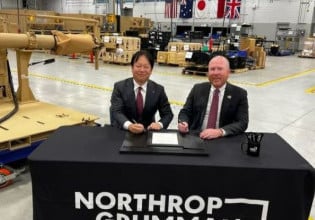Baumer Introduces a High-Resolution 2D Linear Profilometer
Offering fine resolution for better quality control on linear profiles, Baumer’s new OXM200 sensor line is available in 10 flexible models.
Baumer just released the OXM200 line of two-dimensional (2D) position sensors. With X and Z dimensions, Baumer’s sensor is a linear profilometer that can be used to make measurements along a line. Offered in 10 different models, the OXM200 series sensors provide plant engineers flexibility in choosing a sensor with the right resolution, laser color, and communications protocol for the application.
Simpler to use than machine vision and camera-based systems, Baumer’s OXM200 can quickly collect measurements to ensure machining, welding, and other operations are within specifications. With few, if any, barriers to entry, engineers should find the devices both appealing and specifiable based on affordability and ease of deployment and use.

With fine resolution and 10 models, engineers can specify the perfect position sensor for their application. Image used courtesy of Baumer
Detecting Changes as Small as 5 microns
Baumer’s OXM200 is capable of detecting changes as small as 5 microns in the Z direction and 30 microns in the X direction. The software interface removes any variability that is not due to changes in part dimensions, such as conveyor belt flexing, by detecting the difference between part surfaces. This ensures that the 5-micron accuracy actually reflects the component being measured and reduces the number of false-positive flags for defects. It also allows the sensor to be mounted at an angle and is distance-independent, subtracting out the space between the sensor and the part automatically.
The OXM200 can be quickly deployed. It requires no additional software and can be accessed by entering the IP address in the web browser of the computer where the sensor is connected. It can also be accessed using a variety of common industrial protocols, such as Modbus, ProfiNet, IO-Link, and several others. Furthermore, it can take advantage of Power over Ethernet (PoE), meaning it can be installed using just one cable.
Delivers Six Common Measurements
Position sensors have numerous industrial uses. One of the most common is edge location detection, where the sensor finds a step change in height. This allows proper part alignment for machining steps, robot gripping, and other such applications where the precise location of the part must be known.
Besides edge location, the OXM200 performs five other common industrial measurements. It can detect angles, heights, widths, maximum positions, diameters, and areas, all of which can be used for determining the location of a part or ensuring compliance in the quality assurance department.

A few common use cases for the OXM200 sensor. Image use courtesy of Baumer
Given the fine resolution of the OXM200, it can determine things like whether holes were drilled properly in a mounting plate, whether solder balls (on ball grid arrays) on semiconductor chips are uniform, machining burrs, parallelism, and similar quality assurance tasks.
Better Quality Assurance
This sensor will see a lot of use as a GO/NO-GO measurement gauge for quality assurance applications. With the high resolution and variety of measurements that can be detected and calculated, it is a versatile tool for such a purpose. Furthermore, the ease of deployment and use will quickly train new technicians and engineers. Good measurements and simple interfacing lead to fewer quality excursions.






